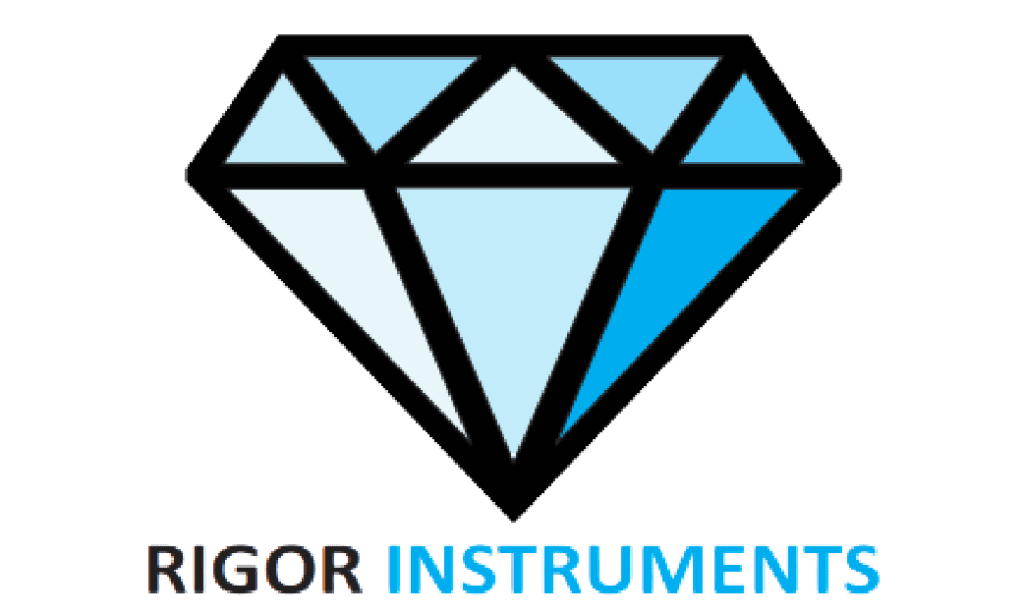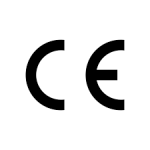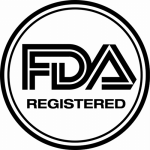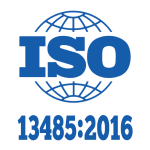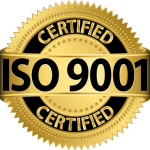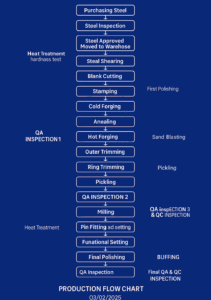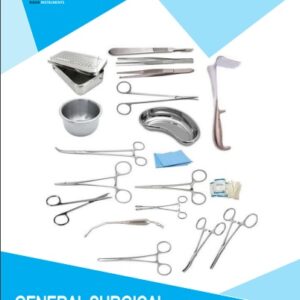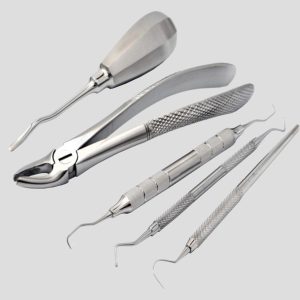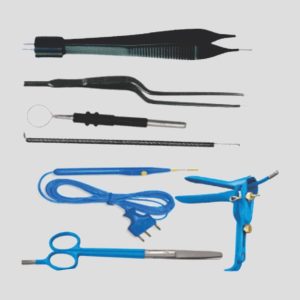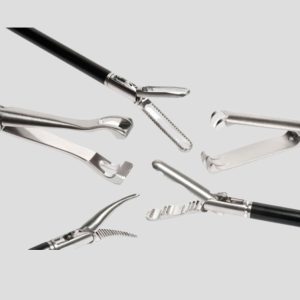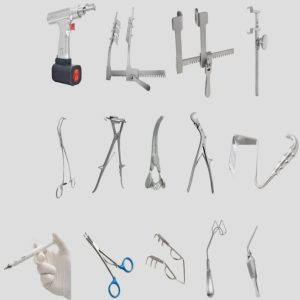A Glimpse of some processes done to your instrument
At Rigor Instruments, precision is not just a goal — it’s our foundation. Our state-of-the-art manufacturing production process ensures surgical instruments that meet the strictest international standards of ISO 13485, CE marking, and FDA compliance. Here’s a detailed look at how we transform high-quality raw steel into world-class surgical tools.
1. Raw Material Procurement & Inspection
Purchasing Steel: Only medical-grade stainless steel (420, 440C, 316L) is procured from certified suppliers.
Steel Inspection: Chemical composition and hardness are tested.
Approval & Storage: Only approved steel is moved to the warehouse.
2. Primary Processing
Steel Shearing & Blank Cutting: Sheets are sheared and cut into blanks for the desired instrument.
Hole Punching & Stamping: Identification marks and hinge holes are punched using CNC or press machines.
Straightening: Blanks are straightened for dimensional accuracy.
3. Forming & Forging
Cold Forging & Annealing: Increases strength, followed by annealing to reduce brittleness.
Hot Forging: Heats metal for complex shapes and durability.
Outer & Ring Trimming: Removes excess metal for refined shaping.
4. Pickling & First QA
Pickling: Acid bath cleans oxidation and surface contaminants.
QA Inspection 1: Instruments are checked for defects post-forging.
5. Machining & Functional Settings
Milling: Complex grooves and slots are machined.
QA & QC Inspection 2: Tolerances and dimensions are checked.
Pin Fitting & Functional Setting: Joint assembly and mechanical calibration.
QA Inspection 3: Mechanical action is verified.
6. Cleaning & Surface Preparation
Boil Test & Passivation: Instruments are boiled and chemically passivated to enhance corrosion resistance.
Final Polishing: Surfaces are mirror-finished for clinical use.
Ultrasonic Cleaning: High-frequency vibration removes micro-particles.
Sandblasting: Matte finish is applied where required.
7. Surface Coating & Branding
Gold Plating / Plasma Coating: Specialty finishes for ophthalmic or aesthetic tools.
Final Setting & Buffing: Final touches on contours and shine.
QA & QC Final Inspection: All instruments undergo a double-check process.
8. Assembly & Labeling
Grinding & Fitting: Sharpness and mechanical assembly.
Lot Labeling: Each batch is labeled for traceability.
UDI & Barcode Printing: Instruments are marked with unique device identifiers.
9. Packaging & Dispatch
Packaging: Sterile or bulk packaging per customer specifications.
Storage & Shipping: Secure warehousing until delivery.
What Makes Rigor Instruments a Leading Surgical Items Manufacturer in Pakistan?
